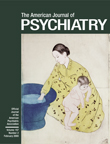I get a kick out of make-believe Clint Eastwood, Star Wars, Jean-Claude Van Damme violence. And as a devotee of the controlled violence on football Saturdays, I cheer when my beloved Missouri Tigers try to smash those ruffians from Nebraska into the turf. However, real violence is another story. The brutality of it scares me, and the senselessness of it repels me. What to do about real violence? No one really knows, but maybe the place to start is with violent children, because a number of them will mature into violent adults.
Youth Violence is a well-edited book written primarily by psychologists and social scientists. The longest section, Etiology and Prevention, pulls no punches and is quite informative. It focuses on interpersonal violence, the use of physical force on another person with the intent of causing injury. We learn that after-the-fact control strategies such as heavy legal sanctions and jailing of offenders “have either not been evaluated or the evaluations have failed to establish any significant, sustained deterrent effects” (p. 6). As a psychiatrist, I experienced some heartburn on reading that biomedical approaches, supportive or insight-oriented psychotherapy, and intensive casework programs don’t seem to be effective. Neither is Project DARE (Drug Abuse Resistance Education). Neither are attempts to create positive peer cultures in custodial settings or small group interventions. Institutional programs such as skill training and behavior modification don’t affect the antisocial behavior of adolescents after they are released.
So what works? Supposedly robust data support the following to reduce the risk of serious antisocial behavior and violence: increasing predictability and parental monitoring of children, decreasing negative parenting methods, and improving intrafamily relations.
This book classifies four types of violence. Most common is situational, which is affected by “catalysts,” such as extreme heat, alcohol and drug use, and access to handguns, and by contextual factors such as poverty and neighborhood disorder. Next most common is relationship violence, which may become a familial habit. Predatory violence (muggings, robbery, gang assaults) constitutes 5% to 8% of the total but is the type most studied and most often targeted in policy discussions. Pathological violence features repetitive and extreme behavior that requires a heavy commitment of psychiatric resources; it accounts for less than 1% of total violence.
Characteristically aggressive people evidently first display their deviant behavior at an early age, but most highly aggressive children do not grow up to be highly aggressive adults. “Despite the undeniable influence that genetic, hormonal, perinatal, and traumatic factors have on the development of aggression, there is ample evidence that a substantial portion of the individual differences in characteristics of aggressiveness in humans can be attributed to learning” (p. 88).
There you have it. Violence is primarily learned behavior, aggression is a relatively stable and chronic behavior that begins in early life, and prevention and intervention efforts need to be systematic and long-term with a major focus on families.
The book also contains good review chapters on gangs, guns, girls, teaching prosocial behaviors, and biomedical treatment. The chapter authors propose a comprehensive, complicated plan of multilevel prevention and intervention to reduce youth violence.
On a practical level, I am underwhelmed to learn that “our most successful prevention programs have relatively modest deterrent effects, for example, 15%–25% reductions in onset…offending rates compared with the rates of control groups” (p. 16). Face to face with a violent youth in my office, I am overwhelmed by the systemic obstacles to providing help. If most violence is learned, then nothing short of a national cultural change will stem the tide. Family intervention sounds great, providing you’ve got a family willing and able to participate, e.g., a dad who isn’t strung out on drugs or in prison and a mom who isn’t working two jobs. A blurb on the dusk jacket of Youth Violence states that the book is “a much needed wake-up call for politicians and policy makers.” I agree, but I wonder what sort of a reception it will receive, since “religion” is not even listed in the book’s index and “media violence” rates less than one complete sentence.
Despite recent high-profile ghastly school shootings, some sort of change is occurring. A major study
(1), published after
Youth Violence came out, concluded that “declines in fighting and weapon carrying in U.S. adolescents between 1991 and 1997 are encouraging and consistent with declines in homicide, nonfatal victimization, and school crime rates.”

